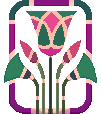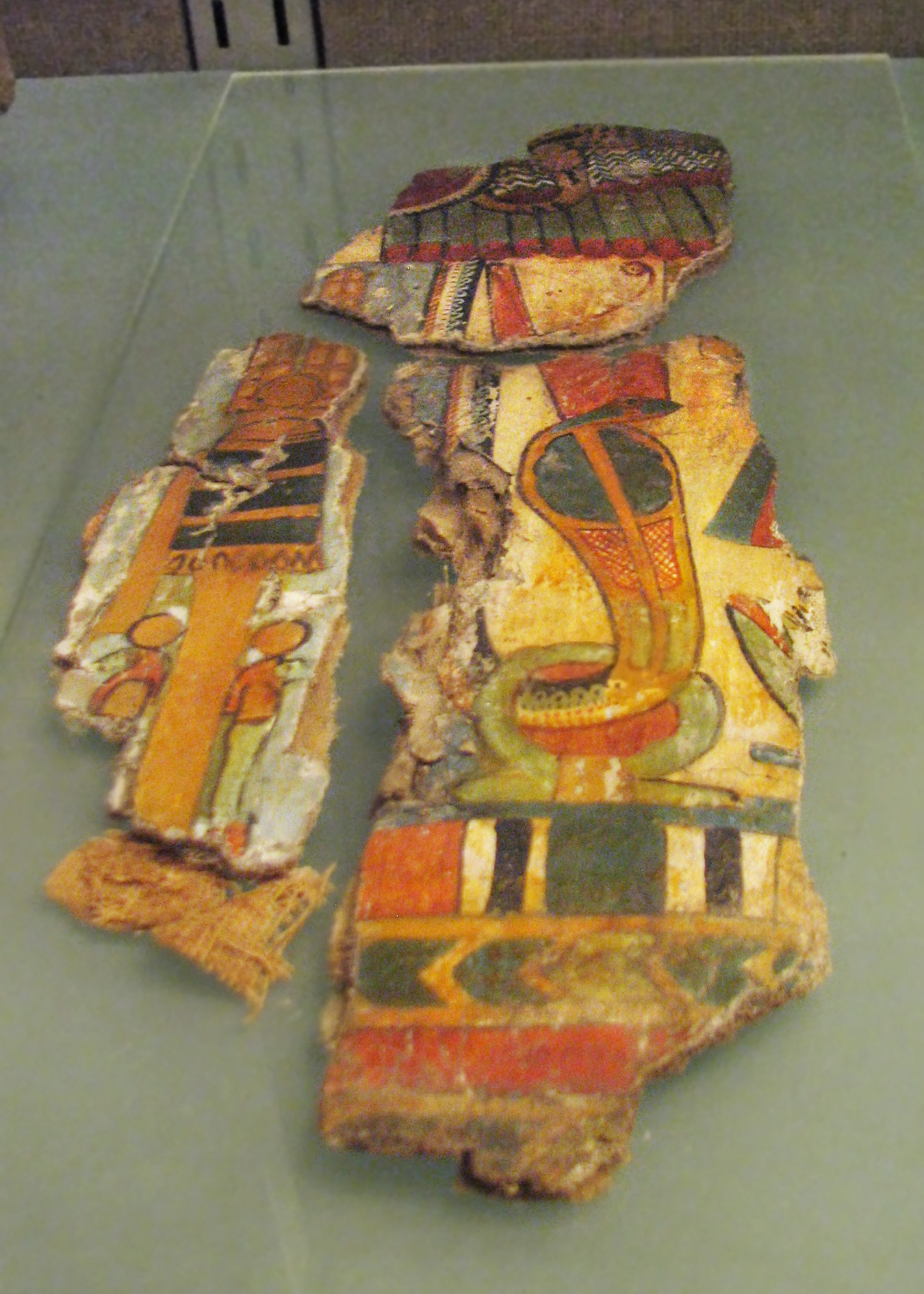
Sunday, March 24, 2013
"Three Depictions of Cobra Deities"
8:36am

Sunday, March 24, 2013
"Three Depictions of Cobra Deities"
8:36am
 Wadjet wearing the red crown of Lower Egypt on cartonnage fragments...
|
|
I took the book, open to plate 54-55, placed it in a sunny spot on the floor and photographed it. The sun gave better illumination and less specklies than a scan would have. From that result, I created the trace. The photos of the cartonnage fragments and detail from Imhotep's Book of the Dead were taken by me during my visit to the Met museum in 2009. I was first attracted to this rendition of Renenutet because of its rather alien appearance. Why did the artist put ears on a cobra body? There's a likely explanation. Ears show up in a variety of places where you'd not expect them. The stele of Penbuwy, which inspired my recent image of Ptah, features unusally placed ears. Behind and above Ptah are five ears. They were put there to help the god hear any messages his devotees might have for him. Sometimes a stela will not have much more than just a couple of ears, as in a small stela at the British Museum (EA 25296). Per the inscription, the "Lady of Dendera", (aka Hathor), is the deity for whom the stela was made. An 'ear stela' at Chicago's Oriental Institute (OIM 16718) has no inscription, but features five pairs of ears. This stela was considerably outdone by that of Mahuia (EA 1471), which sports FORTY FOUR ears neatly balanced around a center row of text. Lenka Peacock gives the translation along with her photo:
"Praises to the spirit of Ptah, lord of truth, great of strength, the Hearer."
( "The Hearer" (s+d+m) is written with an animal's ear and a phonetic complement (m). The bottom line records that the stela was made for the miller Mahwia, who dedicated it to encourage Ptah to hear his prayers.")
Emily Teeter reveals "Some of these ear stelae have been excavated from houses", showing that "religious
experience in ancient Egypt was not limited to the temple spaces. On the contrary, piety could be
expressed anywhere and everywhere. It is this multiplicity of places and means of expression that enlivened
ancient Egyptian religion and allows us a better glimpse of how Egyptians actually expressed their
beliefs." (From Religion and Ritual in Ancient Egypt, (Cambridge University Press 2011), pages 84-86.)
Unlike Ptah, Renenutet, who was goddess of fields, granaries, and kitchens, might not have had grand temples of her own, but many village shrines were installed in her honor and some temples made sure to include a shrine to Renenutet. The ear-bearing statuette of Renenutet was likely a precious possession of an agricultural worker in the Faiyum.
|
Forward...
Go Back to Archives...
Go Back to Main Journal Index Page...
Go to Index of Joan's pages...
![]()
© Joan Ann Lansberry